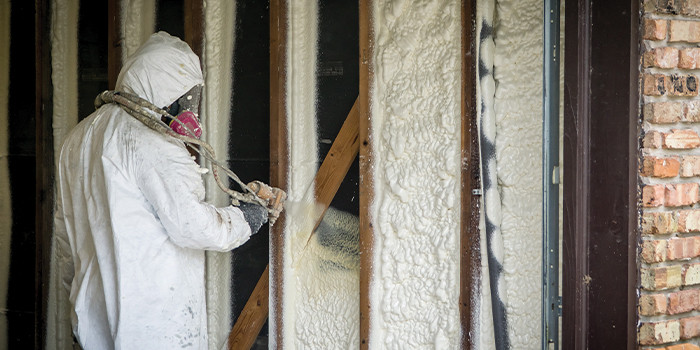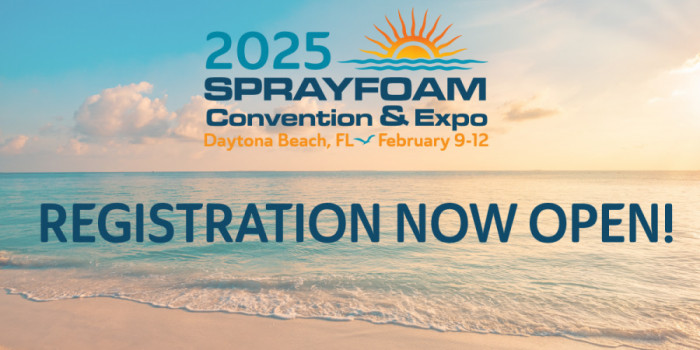PFAS & Spray Polyurethane Foam


Spray Foam Magazine – Late Summer 2022 – In recent months, several states have introduced legislation to curtail the use of products containing PFAS chemicals, which in some cases, can impact the use of closed-cell spray polyurethane foam (SPF) products.
What are PFAS Chemicals?
PFAS is an acronym for a family of chemicals called per- and poly-fluoroalkyl substances. Because of their resistance to grease, water, oil and heat, these chemicals are used in a wide range of consumer products including stain- and water-resistant fabrics and carpeting, cleaning products, paints, and fire-fighting foams. Certain PFAS are also authorized by the FDA for limited use in non-stick cookware, food packaging, and food processing equipment. Depending on the specific chemical definition of PFAS, which can vary state-to-state, PFAS can also include HFC and HFO blowing agents used in closed-cell SPF as well as many related refrigerants used in HVAC equipment.
What is the concern with PFAS?
PFAS do not easily break down and some types have been shown to accumulate in the environment and in our bodies. Exposure to some types of PFAS have been linked to serious health effects.
Current PFAS legislation and its impact on SPF:
Based on these concerns, several state governments across the U.S. have introduced legislation to control the use of PFAS. The concern for the spray foam industry is that an overly broad definition of PFAS, as well as the wide scope of the legislative language used in some states, could have a negative impact on the use of both HFC and HFO based blowing agents used in closed-cell SPF. Impacts could include significant reporting requirements for foam manufacturers and contractors and potentially a restriction, or ban, on the use of closed-cell SPF.
So far, the SPF industry has had some success opposing PFAS legislation that impacts SPF. In May, an effort led by American Chemistry Council (ACC), and supported by a write-in campaign from the SPFAdvocacy Network, successfully explained the unintended consequences of this overly broad legislation and convinced a Minnesota Senate committee to strike PFAS regulations from an upcoming bill going before the Minnesota legislature.
Unfortunately, a more recent PFAS bill in Maine has been approved. This bill requires reporting of PFAS chemicals by all product manufacturers beginning January 1, 2023. More importantly, this bill will ban the sale of all products containing added PFAS chemicals by 2030, unless manufacturers can prove there are no alternatives. If not addressed this could have a significant impact on the use of closed-cell SPF in the state. The SPFA, working together with the American Chemistry Council and Spray Foam Council (SFC), will be working diligently to address this issue.
What is the industry doing?
During the next several months, it is likely that other states may introduce legislation like Maine’s. The SPFA, working in collaboration with the ACC and SFC, is monitoring all state and federal legislation concerning PFAS restrictions. When necessary, SPFA will engage with state legislatures through the SPFAdvocacy Network to contact key state officials to voice our opposition to PFAS legislation that directly impacts the use of spray polyurethane foam. Please watch for, and respond to, any SPFAdvocacy Alerts concerning PFAS legislation in your state. It’s important now more than ever to be a part of the SPFAdvocacy Network. You don’t need to be an SPFA member and it’s simple and costs nothing to join.
About the author Rick Duncan Ph.D., P.E is the Executive Director of the Spray Polyurethane Foam Alliance (SPFA), the industry’s leading organization representing contractors, material and equipment manufacturers, distributors and industry consultants.
Disqus website name not provided.










































